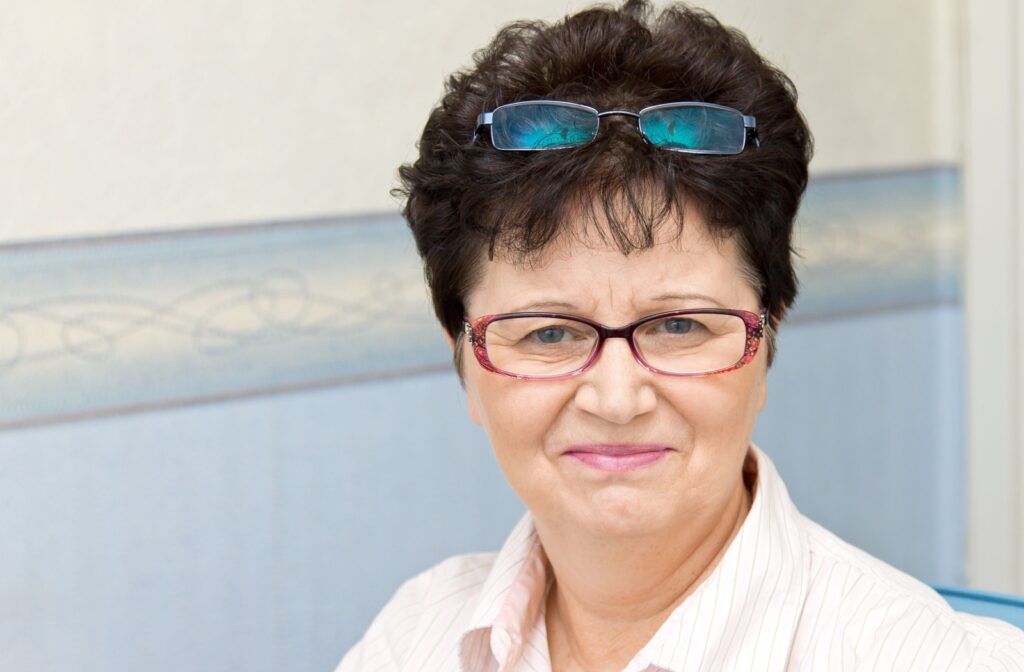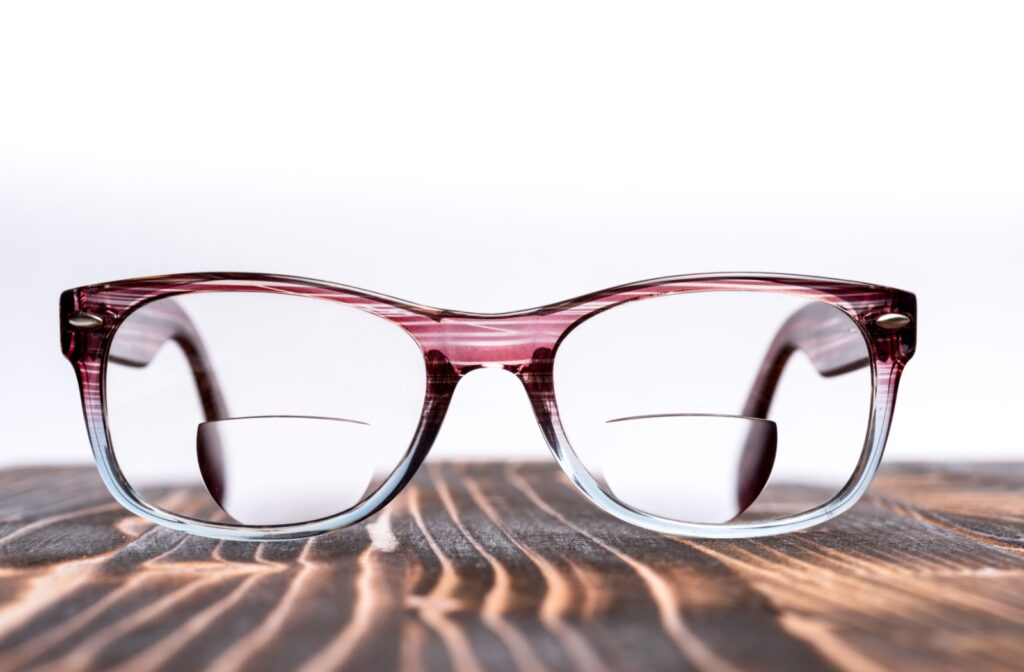As people age, it’s common for their vision to shift. Once effortless tasks, like reading a menu, threading a needle, or scanning a phone screen, may begin to feel more challenging. For many adults, this change in near vision can signal the early stages of presbyopia, a natural condition where the eye’s ability to focus on close objects gradually decreases. It’s often during this period that bifocals come into the conversation.
Bifocals are lenses designed to correct two different vision needs in one pair of glasses. They typically support both distance and near vision by incorporating distinct lens segments. You might need bifocals if you’re experiencing difficulty focusing on close objects, frequent eye strain when switching between near and far tasks, or the need to use multiple pairs of glasses throughout the day.
Signs You Might Need Bifocals
Blurry Vision Up Close
One of the first signs that bifocals may be needed is difficulty seeing objects up close. These symptoms can often appear gradually. People might begin holding books or phones farther away to bring text into focus.
Some common signs include:
- Trouble reading small print without squinting
- Needing more light to read or do close work
- Eye strain when focusing on near objects for too long
Vision Fatigue When Switching Focus
Another indicator is visual fatigue that occurs when transitioning between tasks at varying distances. For instance, driving and then reading a map, or switching from a computer screen to paperwork, may begin to feel visually taxing.
This kind of fatigue might feel like:
- Momentary blur when shifting focus between distances
- Mild headaches after screen time or reading
- Feeling the need to remove or switch glasses often
Using Multiple Pairs of Glasses
Some people start compensating by alternating between reading glasses and distance glasses. While this might work temporarily, it can become inconvenient and frustrating.

What Happens During an Eye Exam
An optometrist can assess how well each eye functions at various distances and determine whether the current prescription adequately meets both near and far vision needs. When both distances require correction, bifocals or another multifocal lens type may be discussed.
An exam typically includes:
- Refraction testing for both near and distance
- A review of visual habits and symptoms
- Recommendations based on lifestyle needs and eye health
Types of Multifocal Lenses
Bifocals vs. Progressives
Bifocal lenses have a visible line separating the distance and near correction. Progressives offer a more gradual transition between focal lengths without a visible line. Each option has its pros and cons depending on visual needs and personal comfort.
- Bifocals offer a clear distinction between the 2 focal areas
- Progressives provide smooth visual transitions for distance, intermediate, and near tasks
- Choosing between them often depends on adaptation ease and aesthetic preference
Adjusting to Bifocals
What to Expect in the First Few Weeks
It’s normal to need time to adapt to bifocals. The brain and eyes must learn how to look through the appropriate part of the lens for each task. With consistent wear, most people adjust over time.
During this period, people may experience:
- Blurred vision at first when using the wrong segment
- Difficulty judging depth or stairs
- Occasional dizziness that typically fades with use
Consistent wear and a proper frame fit can help ease the transition. An optometrist can also make minor adjustments to improve lens performance.
Benefits in Daily Life
Convenience & Visual Clarity
Bifocals are especially helpful for those who frequently switch tasks throughout the day. Whether reading, cooking, or attending meetings, having both distance and near correction in one pair of glasses adds convenience.
Bifocals are often helpful for those who:
- Read or use digital screens frequently
- Drive and need dashboard or map clarity
- Work with tools or hands-on tasks that require close-up precision
Tailoring to Lifestyle Needs
The specific type of lens can also be matched to daily habits. Someone who spends time outdoors might prioritize distance and intermediate zones. Someone at a desk may need more strength in the near portion of the lens.
During the fitting process, it helps to discuss:
- How much time is spent on near vs. distance tasks
- Common environments like the office, home, or vehicle
- Specific needs such as reading music, crafting, or manual work
Not Just for Older Adults
When Younger People Might Need Bifocals
Although commonly associated with aging, bifocals can also be recommended for young people in certain situations. Some focusing disorders, post-surgical needs, or vision therapy goals may make bifocals appropriate even in early adulthood.
These cases may include:
- Eye muscle imbalances
- Accommodative disorders
- Recovery from specific eye conditions or procedures
An optometrist can determine whether a multifocal lens is beneficial for a person based on vision testing and their medical history.
Keeping Up with Vision Needs
Why Regular Exams Matter
Vision is not static. It changes over time, influenced by age, lifestyle, and health conditions. What worked five years ago may not meet today’s demands. Regular eye exams can help identify whether bifocals or a different correction may better support everyday activities.
These visits allow for:
- Prescription updates as vision evolves
- Adjustments to lens type or fit
- Monitoring of eye health alongside vision correction
Taking the Next Step
When to Talk to an Eye Doctor
If reading has become more difficult, or switching between screens and paper causes strain, it might be time to explore whether bifocals could help. These lenses provide a convenient way to manage both near and distance vision needs without needing to juggle multiple pairs of glasses.
By booking an appointment with us at Total Vision Carlsbad Plaza and getting guidance from an experienced optometrist; people can better understand their options and find a lens solution that supports comfort, clarity, and daily functionality.



